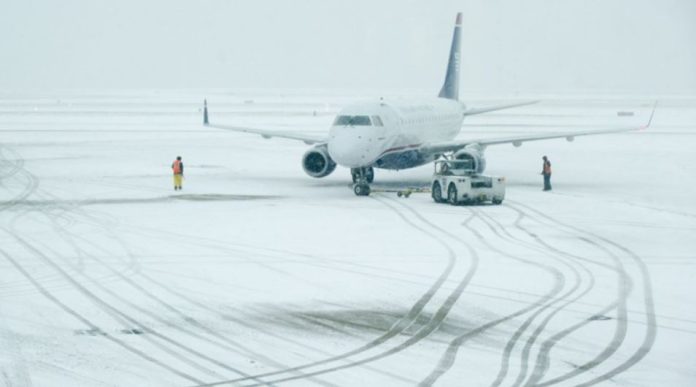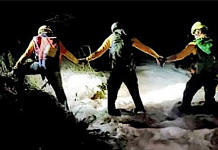
Dec. 22 (UPI) -- A powerful winter storm making its way across a huge swath of the United States canceled more than 3,700 commercial flights on Thursday and placed hundreds of millions of Americans under severe weather warnings ahead of the holiday weekend.
The extraordinary Arctic cold front brought a combination of wind, snow and freezing rain to the Plains, and is expected to continue sweeping across the Midwest all throughout Thursday before plowing into the East Coast, where authorities are working to alert populations about the approaching danger.
About 215 million people across 48 states are currently under some form of weather advisory related to the storm.
As of 8 a.m. Thursday, 3,749 flights had been canceled around the country because of the storm, while an additional 8,400 flights were delayed. More than 2,000 international flights were also affected, according to FlightAware tracking.
Southwest Airlines has so far grounded about 13% of 4,000 flights that had been scheduled to take off through Friday.
The enormous weather system stretched for thousands of miles from the Pacific Northwest, across the Great Plains, and was expected to reach far into the Deep South and Gulf Coast states before blasting the Eastern Seaboard.
Many states in the path of the storm were experiencing blizzard-like conditions, bone-chilling winds and record-breaking temperatures, according to Brian Hurley, a senior forecaster with the National Weather Service in College Park, Md.
White-out conditions were being reported across the Dakotas, Montana, Nebraska, Wyoming, and Colorado, where temperatures plummeted about 40 degrees within one hour on Wednesday, according to authorities.
The high in Denver was only expected to reach minus 2 degrees on Thursday while the low could dip to about minus 40 degrees later in the night, forecasters said.
Winds were the strongest across the Midwest, Ohio Valley and Northeast, and households were warned to expect power outages due to downed trees and power lines. Winds were clocked at 45 mph, as far out as 1,000 miles from the storm's center.
In Illinois, temperatures were expected to dip as low as minus 35 degrees through Saturday, with snowfall up to four inches.
The coldest temperature felt so far has been minus 70 degrees in eastern Wyoming.
Driving conditions were treacherous at best, with authorities in several states shutting down highways as visibility and traction worsened. In South Dakota, more than 100 vehicles got stranded on a highway near Rapid City.
Elsewhere, the Minnesota highway patrol responded to 272 vehicle crashes on Wednesday just as the snow began to fall.
More than 12 inches of snow was expected over the Great Lakes, with wind gusts topping 50 mph.
Governors in several states, including Georgia, Kentucky, North Carolina and Wyoming, have declared states of emergency, while officials in Birmingham, Ala., issued the city's first-ever wind chill warning on Wednesday.
Meteorologists warned that Northeast states like New York, Rhode Island and Massachusetts could see major coastal flooding as high tides combine with powerful southerly winds.






